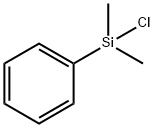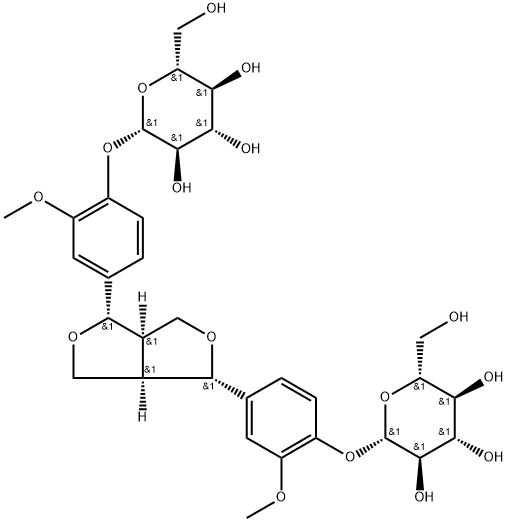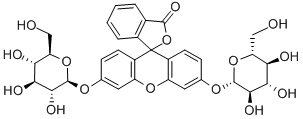Gastrodin
- CAS NO.:62499-27-8
- Empirical Formula: C13H18O7
- Molecular Weight: 286.28
- MDL number: MFCD00272169
- EINECS: 683-202-7
- SAFETY DATA SHEET (SDS)
- Update Date: 2024-11-19 23:02:33

What is Gastrodin?
Description
Gastrodin is extracted from the dry root of the orchid plant, Gastrodia elata. The source of raw materials is Yunnan Province. Traditional Chinese medicine Gastrodia elata (Gastrodia elata Bl.) is also known as Chi Jian, Ding Feng Cao, Shui Yang Yu, and so on, belonging to special symbiosis perennial herb of Orchidaceae and Armillaria mellea. The medicinal part is its tubers. It has sweet flavor and liver channel tropism and is neutral in nature. Traditional Chinese medicine believes that its main functions are to expel wind and relieve convulsion, calm the liver and suppress liver-yang, and expel wind evil and channel. There are 23 chemical ingredients extracted from Gastrodia elata, including gastrodin, gastrodia glycosides, vanilla alcohol, vanilla aldehyde, beta steroid valley alcohol, p-hydroxybenzoic acid, carrot glycosides, and so on, among which the highest content of single active ingredient is Gastrodia glycosides, namely, gastrodin
Chemical properties
White solid
Physical properties
Appearance: white prismatic crystal, odorless, and bitter; little hygroscopicity. Solubility: soluble in water, methanol, ethanol, acetone, and acetonyl acetate, insoluble in chloroform, and poorly soluble in ethyl ether. Melting point: ?153 to 156?°C. Specific optical rotation: ?68 to ?72° .
History
It has been more than 30?years since the chemical composition of Gastrodia elata was analyzed. It includes phenols, organic acids, sterols, and so on. At present, the studies of the composition of Gastrodia elata focus on the fingerprint, but the studies of gastrodin were centered on the activity. The studies showed that gastrodin has many pharmacological effects with safety and few side effects; moreover, it is not easy to accumulate in the body. Based on traditional medicinal experience of Gastrodia elata, gastrodin has been developed as a medicine for the treatment of insomnia, headaches, and other symptoms related to the functions and indications of Gastrodia elata. At present, many pharmaceutical factories in China have produced active pharmaceutical ingredients (API) and general preparation of gastrodin, such as Gastrodia tablet, Gastrodia capsule, and Gastrodia injection. To reduce the frequency of administration, the fluctuations of blood drug concentration, as well as side effects, some new dosage forms have been developed in recent years, such as Gastrodia dispersible tablets, Gastrodia sustained-release tablet, sustained-release pellets and osmotic pump tablets, etc. . Although gastrodin has been applied clinically, a lot of studies still need to be done to confirm the pharmacological effects of gastrodin. Recent studies found that other compositions of Gastrodia elata also showed rather excellent biological activity, suggesting that the study of Gastrodia elata and gastrodin needs further investigation.
The Uses of Gastrodin
Gastrodin up regulates heme oxygenase-1 expression through activation of p38 MAPK/Nrf2 signaling pathway thus protecting the SH-SY5Y cells from MPP+-induced oxidative cell death.
Indications
Gastrodin is included in the International Pharmacopoeia (5th ed.). The dosage forms include injections, tablets, and capsules. They are widely used for the treatment of vertigo (Meniere’s disease, medicinal dizziness, traumatic vertigo, sudden deafness, vestibular neuronitis, vertebrobasilar insufficiency, etc.), headache (vascular headache, migraine, etc.), neuralgia (trigeminal neuralgia, sciatica, etc.), neurasthenia syndrome, and brain traumatic syndrome .
Definition
ChEBI: Gastrodin is a glycoside.
Pharmacology
Gastrodin has the pharmacological effects of hypnosis, sedation, and anticonvulsive. The pentobarbital sodium-induced sleep time test and sodium barbital-induced
sleep onset latency test demonstrated that gastrodin can prolong the sleeping time
and shorten the sleep onset latency in mouse, suggesting that gastrodin has the sedative and hypnotic effects .
Gastrodin also has antiepileptic effect. It suggested that gastrodin may inhibit the
hippocampal excitatory neurotransmitter receptors of amino acid glutamate, activate hippocampal inhibitory neurotransmitter receptor of GABA, reduce the excitability of the cerebral cortex, and thus attenuate the development of epilepsy to play
a role of antiepileptic effect .
Additionally, research has shown that gastrodin has certain pharmacological
effect on scavenging free radicals and inhibiting the central nerve cell apoptosis,
etc., which may be related to antiaging and neural protection . According to the
available references, the researches of pharmacology and clinical efficacy of gastrodin are very preliminary; more research evidences still need to confirm whether
gastrodin is the active constituent of rhizoma gastrodiae.
Clinical Use
Gastrodin has sedative and hypnotic, analgesia, and immune enhancement function
and is used for the treatment of tension headache to relieve pain and intense sentiment and thus further relieve the related symptoms . Clinical usage of gastrodin
acupoint injection to treat insomnia also achieves certain effect . Moreover, gastrodin agents have been used for the treatment of cardiovascular diseases and microcirculation system, such as hypertension and coronary heart disease without
obvious side effects .
It is also reported that gastrodin can treat epilepsy, vascular dementia, deafness,
tinnitus, herpes zoster, osteoarthritis, cognitive impairment, and so on but still needs
further investigation.
Properties of Gastrodin
| Melting point: | 169-170° |
| Boiling point: | 563.2±50.0 °C(Predicted) |
| alpha | D20 -17.5° (c = 1 in pyridine) |
| Density | 1.504±0.06 g/cm3(Predicted) |
| storage temp. | 2-8°C |
| solubility | DMSO (Slightly, Sonicated), Methanol (Slightly), Water (Slightly, Sonicated) |
| form | Solid |
| pka | 9.10(at 25℃) |
| color | White to Off-White |
| λmax | 272nm(MeOH)(lit.) |
| Merck | 14,4375 |
| InChI | InChI=1/C13H18O7/c14-5-7-1-3-8(4-2-7)19-13-12(18)11(17)10(16)9(6-15)20-13/h1-4,9-18H,5-6H2/t9-,10-,11+,12-,13-/s3 |
| CAS DataBase Reference | 62499-27-8(CAS DataBase Reference) |
Safety information for Gastrodin
| Signal word | Warning |
| Pictogram(s) |
 Exclamation Mark Irritant GHS07 |
| GHS Hazard Statements |
H302:Acute toxicity,oral |
| Precautionary Statement Codes |
P280:Wear protective gloves/protective clothing/eye protection/face protection. P305+P351+P338:IF IN EYES: Rinse cautiously with water for several minutes. Remove contact lenses, if present and easy to do. Continuerinsing. |
Computed Descriptors for Gastrodin
| InChIKey | PUQSUZTXKPLAPR-SYDLEIBONA-N |
| SMILES | [C@@H]1([C@H](O)[C@H]([C@H](O)[C@@H](CO)O1)O)OC1C=CC(CO)=CC=1 |&1:0,1,3,4,6,r| |
New Products
(S)-3-Aminobutanenitrile hydrochloride 4-Methylphenylacetic acid N-Boc-D-alaninol N-BOC-D/L-ALANINOL Tert-butyl bis(2-chloroethyl)carbamate 3-Morpholino-1-(4-nitrophenyl)-5,6-dihydropyridin- 2(1H)-one Furan-2,5-Dicarboxylic Acid Tropic acid 1-Bromo-3,5-Di-Tert-Butylbenzene S-2-CHLORO PROPIONIC ACID ETHYL ISOCYANOACETATE 2-Bromo-1,3-Bis(Dimethylamino)Trimethinium Hexafluorophosphate 4-IODO BENZOIC ACID 3-NITRO-2-METHYL ANILINE 1-(2,4-DICHLOROPHENYL) ETHANAMINE (2-Hydroxyphenyl)acetonitrile 4-Bromopyrazole 2-(Cyanocyclohexyl)acetic acid 4-methoxy-3,5-dinitropyridine 1-(4-(aminomethyl)benzyl)urea hydrochloride 2-aminopropyl benzoate hydrochloride diethyl 2-(2-((tertbutoxycarbonyl)amino) ethyl)malonate tert-butyl 4- (ureidomethyl)benzylcarbamate Ethyl-2-chloro((4-methoxyphenyl)hydrazono)acetateRelated products of tetrahydrofuran








You may like
-
 Gastrodin Hemihydrate 98.00% CAS 62499-27-8View Details
Gastrodin Hemihydrate 98.00% CAS 62499-27-8View Details
62499-27-8 -
 Gastrodin CAS 62499-27-8View Details
Gastrodin CAS 62499-27-8View Details
62499-27-8 -
 Gastrodin 95% CAS 62499-27-8View Details
Gastrodin 95% CAS 62499-27-8View Details
62499-27-8 -
 1975-50-4 98%View Details
1975-50-4 98%View Details
1975-50-4 -
 2-HYDROXY BENZYL ALCOHOL 98%View Details
2-HYDROXY BENZYL ALCOHOL 98%View Details
90-01-7 -
 2-Chloro-1,3-Bis(Dimethylamino)Trimethinium Hexafluorophosphate 221615-75-4 98%View Details
2-Chloro-1,3-Bis(Dimethylamino)Trimethinium Hexafluorophosphate 221615-75-4 98%View Details
221615-75-4 -
 14714-50-2 (2-Hydroxyphenyl)acetonitrile 98+View Details
14714-50-2 (2-Hydroxyphenyl)acetonitrile 98+View Details
14714-50-2 -
 118753-70-1 98+View Details
118753-70-1 98+View Details
118753-70-1